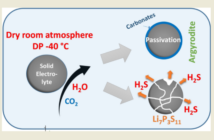There has been a fair amount of news lately regarding a possible commercial breakthrough for renewables. But the pace is slow, with 2025 an optimistic wish, and 2035 a likely probability. Moreover, progress with electric auto batteries also seems to be taking time. We decided to take a closer look and try to find the reason.
Electric Auto Batteries Develop in Small Steps

That seems to be equally true for all battery types. We had the big discovery over a century ago when the basics – electrodes and electrolytes – appeared in 1859. The ‘aha moment’ is over and now we have to sort the details, frustratingly one-by-one.
This slow progress aligns with the principle Gordon Moore formulated in 1965. Because Moore’s Law predicted that the number of components per integrated circuit would double every two years. This proved so accurate the industry used it for planning for several decades.

Certainly, historic evidence shows that batteries generally get better in tiny steps, with occasional small leaps as when lithium emerged.
Toyota has been thinking about electric auto batteries that are solid state for a while. But they are unlikely to get to market before 2022 from reports we read.
Perhaps slow progress with battery development comes with the turf.
The Facts of Battery Progress, and The Time Line
- Gaston Planté invented the lead-acid battery in 1859
- In 1881, Camille Faure produced a commercial version
- Chevrolet installed the first lead starter batteries in 1912
- In the late 1920’s, gel electrolytes appeared on the shelves
- Two Eveready employees invented alkaline batteries in 1957
- In the 1970’s, sealed lead batteries finally made an appearance
- John Goodenough demonstrated a lithium battery in 1979
- Nickel-metal-hydride batteries only followed in 1989
- In 1991, Sony started selling lithium batteries commercially
- Elon Musk sold the first commercially viable electric car in 2008
For the rest, the industry still makes tiny tweaks to electrodes and electrolytes, very few of which have had any significant impacts on consumers. Unless something radical happens, we should continue to see slow progress with electric auto batteries. It seems this is the nature of the game. Do you agree with our finding.
Related
Battery Costs are Catching Up Faster
Electric Cars Are Set to Dominate Soon
Preview Image: Pioneer Wagon




